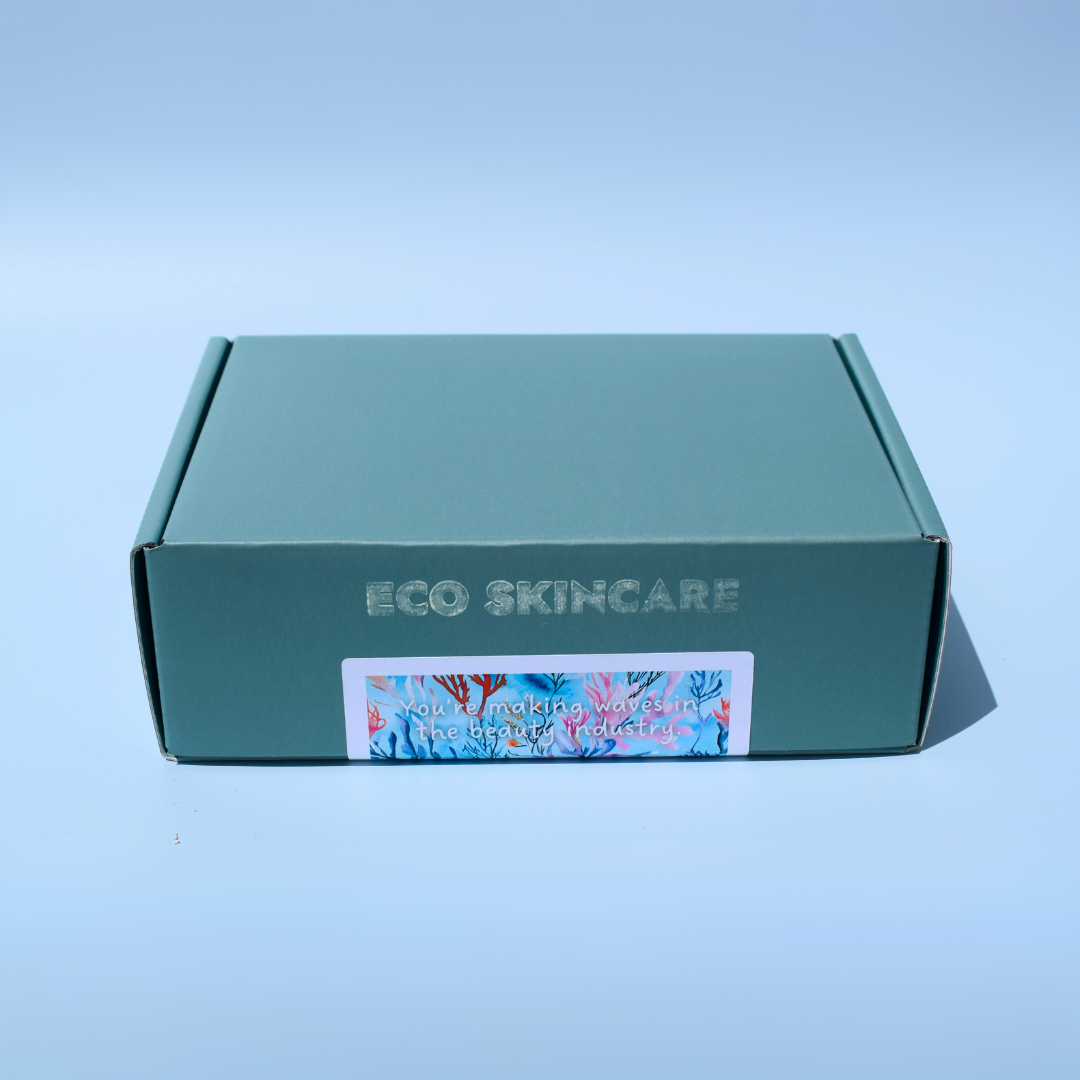
The True Cost of Free Returns: How E-Commerce Hurts the Environment (And What We're Doing Differently)
Share
When was the last time you ordered something online "just to try" because returns were free? If you're like most UK shoppers, probably quite recently. But here's the uncomfortable truth: those "free" returns are costing the planet dearly, and the beauty industry is one of the worst offenders.
The environmental impact of e-commerce goes far beyond the packaging that arrives at your door. From carbon emissions during transport to the harsh reality of returned products ending up in landfill, the true cost of online shopping—particularly in beauty—is finally coming to light.
In this investigative look at beauty e-commerce, we're breaking down exactly what "free returns" actually cost the environment, and what responsible brands can do differently.
The Hidden Environmental Cost of Beauty E-Commerce
Carbon Emissions from Transport and Delivery
Every beauty product ordered online travels a complex journey that generates significant carbon emissions. The environmental cost begins at the warehouse, continues through sorting facilities, and ends with the final delivery van navigating residential streets.
According to research from the UK Department for Transport, last-mile delivery—the final leg from depot to your doorstep—is the most carbon-intensive part of the logistics chain. Delivery vans often run at partial capacity, make multiple stops dispersed geographically, and engines frequently idle between deliveries. Express shipping options increase this impact further because they require less efficient routing and sometimes air freight, which is especially carbon-intensive.
For beauty products specifically, the impact can be disproportionate to product size. A small serum weighing 30 grams might travel hundreds of miles inside packaging that can exceed the product weight many times over, transported alongside dozens of other parcels making individual stops. This inefficiency is magnified by the fact that millions of beauty products are shipped daily in the UK alone.
The Packaging Problem: More Than Meets the Eye
After any beauty haul, layers of packaging materials accumulate: cardboard outer boxes, bubble wrap, plastic air pillows, tissue paper, product boxes, and often plastic wrap around individual items.
The beauty industry faces unique packaging challenges. Products require protection from temperature fluctuations, breakage, and contamination. Glass bottles need cushioning, and creams or serums often require insulation. This results in multiple layers of protective packaging.
Even "recyclable" packaging carries an environmental cost. Cardboard production consumes trees, water, and energy, while recycling processes themselves require energy and water. Contaminated packaging—such as cardboard with tape residue or plastic-lined bubble mailers—is often unrecyclable and is sent to landfill.
Composite materials commonly used in beauty packaging, like bubble mailers lined with plastic or padded envelopes mixing materials, appear recyclable but usually are not accepted by local recycling programs, misleading consumers.
The Returns Crisis: Why "Free" Returns Are Never Free
The Shocking Statistics Behind Returns
Online beauty retail sees return rates significantly higher than in-store shopping. Industry data estimate 20–30% of online beauty purchases are returned versus under 10% for physical stores. This means up to one in three beauty products ordered online are returned.
High return rates stem from the inability to test products beforehand, difficulties in colour matching (especially for foundations and concealers), and the psychological effect of consequence-free shopping. The practice of ordering multiple products to choose from, known as "bracketing," is common in the industry.
Each returned item makes its own carbon-intensive journey back to the retailer. Customers repackage goods (often using new packaging if originals are damaged), arrange drop-off or collection, and the item travels back through reverse logistics networks to processing centres, where it is inspected, repackaged, or discarded.
Where Returned Beauty Products Actually End Up
Unlike clothing, which can sometimes be resold as is, beauty products face strict regulations. In the UK, any opened, used, or potentially tampered beauty product cannot legally be resold as new.
Returned beauty items have several fates:
- Destroyed and sent to landfill: Many returns that cannot be confirmed unused are destroyed, wasting all resources invested in their production and transport.
- Sold to discount retailers: A minor fraction of returns is sold to discount or liquidation outlets.
- Donated: Some unopened and undamaged products are donated, though this requires additional logistics and verification.
- Returned to manufacturers: Some brands accept returns for recycling or proper disposal, though these processes add environmental costs.
Research shows that a significant proportion of returned beauty products end up in landfill because the complexity and cost of refurbishing or recycling outweigh product value.
The True Carbon Cost of Returns
The full carbon footprint of returned beauty products is alarming. Each product undergoes two carbon-intensive delivery journeys. Returns processing centres consume energy for inspection, lighting, and heating. When products are destroyed, embodied carbon from production is wasted entirely.
Studies estimate that the carbon footprint of a returned item can be up to three times that of a product kept after the first delivery. For complex beauty products with global supply chains, this multiplier effect is likely even greater.
The Psychological Trap: How "Free" Returns Change Consumer Behaviour
The Over-Ordering Effect
"Free" and easy returns encourage over-ordering. Customers approach online stores as fitting rooms, ordering multiple products to sample and then returning those that don't fit or suit. This behaviour, rational from an individual perspective, generates massive environmental waste when aggregated.
Ordering five foundations to find the right shade results in four return trips, four sets of packaging waste, and likely four discarded products. Scaled across millions of consumers, the environmental cost is significant.
The Disconnect Between Action and Impact
Returns are invisible environmentally—there's no immediate evidence of harm when dropping off a parcel or handing it to a courier. This disconnect makes it psychologically easy to return items without considering their environmental footprint.
What the Beauty Industry Can Do Differently
Sustainable Packaging Solutions
Forward-thinking beauty brands are redesigning packaging to reduce environmental harm.
- Right-sizing packaging: Using only as much packaging as needed reduces waste, void fill, and shipping weight.
- Mono-material packaging: Packaging made entirely of a single recyclable material (e.g., cardboard with paper tape) simplifies recycling.
- Reusable packaging: Emerging systems allow packaging to be returned, sanitized, and reused multiple times, reducing single-use waste.
- Minimalist packaging: Reducing unnecessary decorative elements while maintaining product protection decreases material consumption.
Consolidated and Carbon-Neutral Shipping
More sustainable shipping approaches include:
- Consolidated shipping: Grouping items in fewer shipments reduces delivery frequency and emissions.
- Optimised delivery routes: Logistics software plans efficient routes, minimizing fuel use.
- Carbon-neutral shipping: Offsetting emissions through verified projects mitigates environmental impacts.
- Alternative delivery methods: Click-and-collect reduces last-mile emissions by consolidating deliveries to one location.
Smarter Returns Policies
Encouraging responsible returns without penalizing customers:
- Providing detailed product information including ingredients, textures, and video demos improves purchase decisions.
- Virtual try-on technology for colour cosmetics helps reduce shade-related returns.
- Sample programmes allow customers to test products in small sizes before buying full-size versions.
- Transparent communication about the environmental impact of returns promotes thoughtful shopping.
- Return fees or store credits, though controversial, can incentivize keeping products where appropriate.
What We're Doing Differently at ecoskincare
Our Sustainable Shipping Commitment
We've rebuilt our shipping operations around environmental principles. All packaging is fully recyclable: boxes use recycled cardboard, secured with paper tape and cushioned with recyclable paper materials—no plastic air pillows or composite materials. Right-sizing is standard, ensuring packaging fits contents directly to minimise waste and emissions.
Consolidated Subscription Model
Our subscription boxes consolidate curated products, enabling efficient planning and delivery by partnered carriers focused on lower emissions. This reduces chaotic multiple parcel deliveries typical of on-demand shopping.
Encouraging Thoughtful Consumption
We discourage over-ordering by providing detailed, honest product descriptions designed to help customers select what truly suits them. Our returns policy is transparent about environmental impacts while remaining customer-friendly. Our skincare education promotes consistent routines over impulsive product switching.
How You Can Reduce Your Beauty E-Commerce Impact
Shop More Thoughtfully
Before purchasing, ask yourself:
- Do I genuinely need this product or am I shopping out of impulse?
- Have I researched adequately to ensure it suits me?
- Am I ordering multiples "just in case"?
- Can I consolidate orders to reduce shipping frequency?
Taking time to consider purchases reduces wasteful returns.
Embrace Subscription Models
Subscriptions deliver products in consolidated shipments on predictable schedules, reducing environmental impact while encouraging regular, mindful use of items.
Master the Art of Product Research
Use reviews, video demos, ingredient information, and samples to make informed decisions that lower returns.
Challenge "Free Returns" Culture
Question brands that heavily promote free returns. High return rates often indicate acceptance of wasteful practices. Prefer brands transparent about their sustainability efforts, even if convenience is slightly reduced.
The Future of Sustainable Beauty E-Commerce
The beauty industry stands at a crossroads. While e-commerce has expanded access and convenience, its environmental cost is no longer ignorable. Leading brands will prioritise sustainability over growth, encourage thoughtful consumption, and be transparent about the real price of convenience.
Change requires collaboration. Brands must redesign packaging and logistics around sustainability. Retailers need smarter returns policies. Consumers have a role to recognize there is no such thing as a truly "free" return: the planet always pays.
Learn About Our Sustainable Shipping Practices
At Eco Skincare, we believe beauty shouldn't cost the Earth - literally. From the products we curate to the way we deliver, our subscription boxes represent thoughtful, sustainable beauty with packaging you can recycle with confidence.
References and Further Reading
- The Interline, The Spiraling Environmental Cost Of E-Commerce Returns, November 2024.
- Falcon Fulfillment, The Environmental Impact of Returns: An E-commerce Reality.
- Earth.org, The Truth About Online Shopping and Its Environmental Impact.
- Woola, 60+ Sustainability in Ecommerce Statistics.
- WeSupply Labs, Ecommerce Returns: Unveiling Environmental Impact.
- Statista, U.S. Consumers Environmental Concerns with Free Returns, 2022.
- IMRG / ReBound, Sustainable Ecommerce Returns Aren't Working — It's Time for a Circular Approach.
- IISD, Addressing the Environmental Footprint of E-Commerce.
- Appriss Retail, From Cart to Landfill: The Environmental Impact of Customer Returns.
- UK Department for Transport - Transport and Environment Statistics.
- WRAP (Waste and Resources Action Programme), Online Shopping and Returns Report.
- Ellen MacArthur Foundation, The Circular Economy in Beauty.
- Carbon Trust, Carbon Footprint of E-Commerce Delivery.
- British Beauty Council, Sustainability in the UK Beauty Industry Report.









